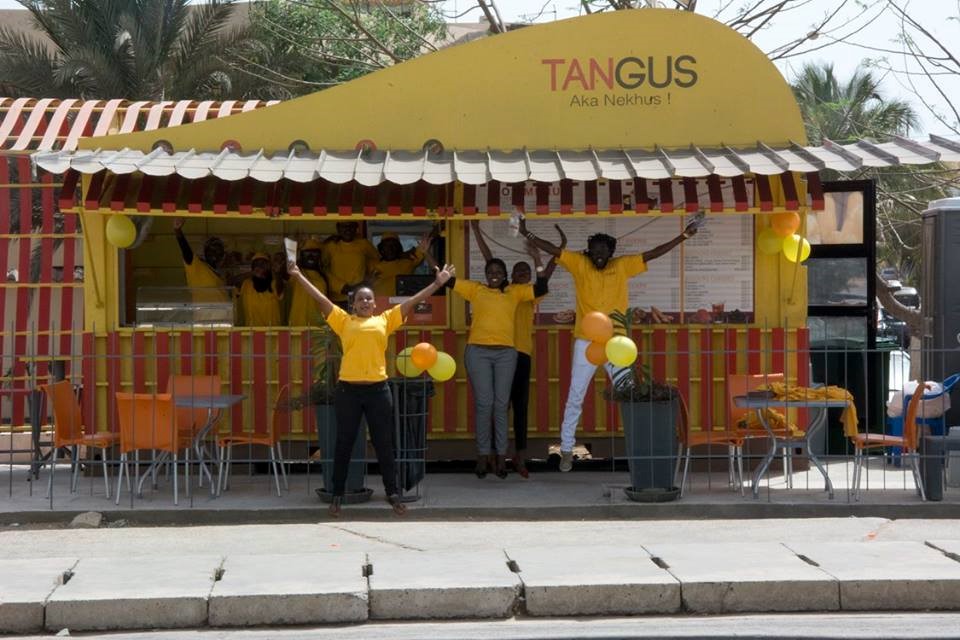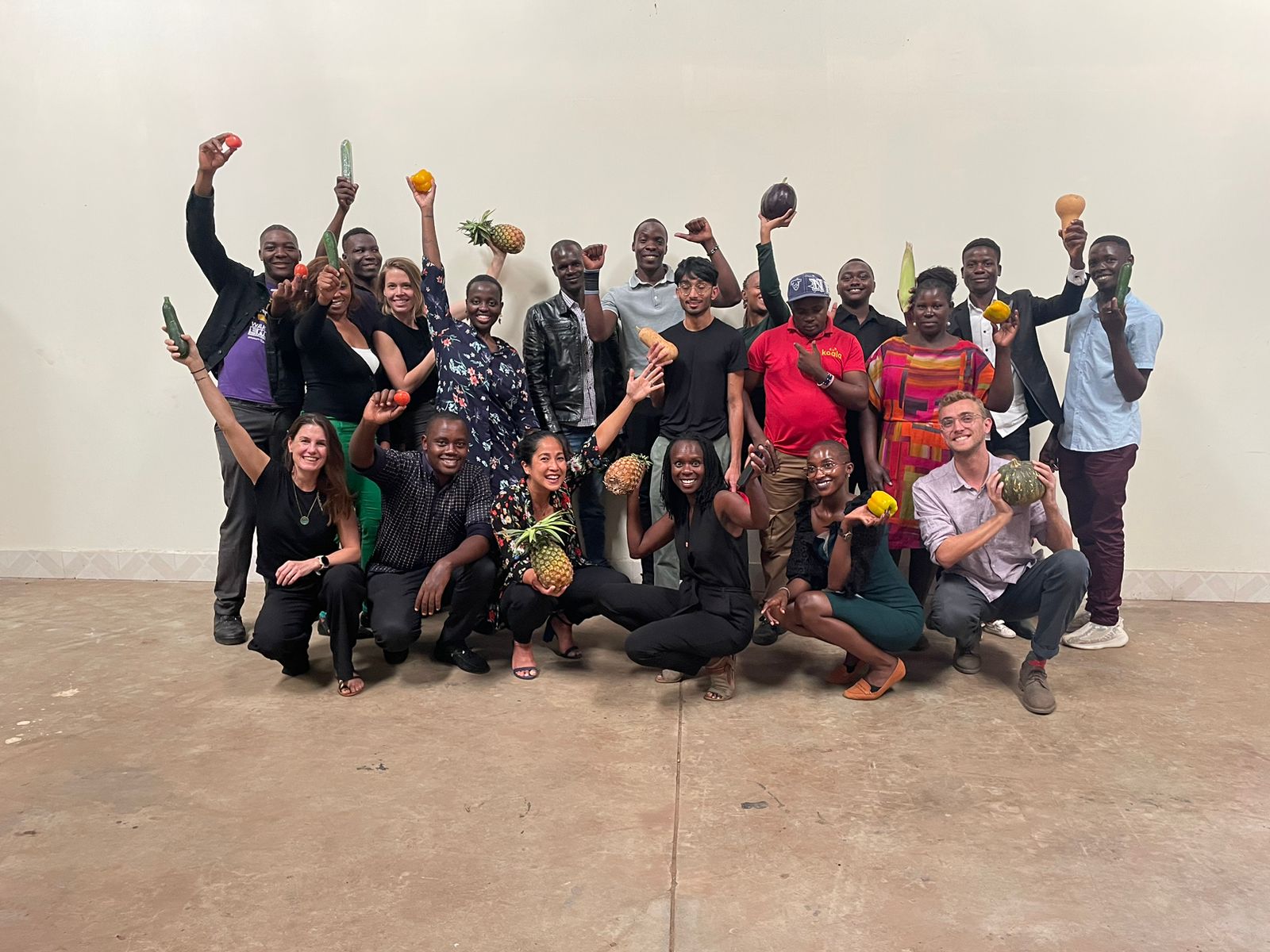ImpactAlpha, Dec 23 – Emerging market entrepreneurs have to thread the needle when pricing their products and services: too low, and they won’t generate the revenues and profits they need to grow; too high and they’ll price themselves out of the very population segments they are targeting for impact.
In Senegal’s capital of Dakar, even before COVID-19 hit, one may have noticed the remnants of colorful fast-casual food service points that are now closed down and gathering dust.
Tangus, an innovative street food service, aimed to be a hygienic improvement over local neighborhood canteens. The outfit secured numerous locations around Dakar in 2016 and, with much fanfare, commenced serving a mixture of local and Western on-the-go meals.
Yet, after an initial flurry, the chain’s sales gradually decreased. Only the restaurant next to the airport proved truly popular. Tangus closed its doors two years later, unable to pivot to a more sustainable business model.
Other local entrepreneurs are gradually taking over the locations, keen to avoid one of the errors Tangus made: pricing its food beyond the reach of the core Senegalese customer.
Palatable price points
It is essential for entrepreneurs to understand that product price is often the single most important factor in purchase decisions, define the target demographic, ascertain their true spending power, and find a palatable price point that ensures alignment between profits, scalability, and impact.
Going down-market is highly aligned with impact, as lower-priced products are able to positively affect a significantly greater number of customers and scale rapidly to generate employment opportunities and positive outcomes through entire value chains.
Yet many potentially impactful SMEs and start-ups find it challenging to maintain product quality while dropping prices to the level accessible to mass-market consumers in emerging and frontier market economies.
Conversely, early-adopters and affluent (by local standards) individuals can support initial sales, giving a false sense of scalability to a wider set of clients. Then, sales falter upon expanding to the wider client base.
When it comes to goods and services for the emerging consumers, the upmarket forces are counter to impact as they limit a business’ reach. The immense size of the world’s emerging and frontier markets, large socioeconomic gaps, and the still-unmet U.N. Sustainable Development Goals create a sense of purpose for impact entrepreneurs.
How can private enterprises orient to these goals? Affordability is key. If attaining a reasonable price point proves insurmountable with the current business model, one should not get discouraged about the market itself, as there will be undoubtedly other diverse approaches to more effectively address consumer needs.
The savvy entrepreneurs and impact investors eventually do find them.
The $2 sandwich
A common error for entrepreneurs in emerging markets and Silicon Valley alike, who are often members of the same well-to-do community, is to assume that the price point reasonable within their social circles is the right one for the mass-market consumer. In the case of Tangus, even the deliberately-set “low price” of $2 for a sandwich is not low enough to sustain projected sales volumes.
To many living in the megapolises of United States or Western Europe, $2 for an on-the-go meal is a great deal. Even in Dakar there are numerous restaurants selling simple sandwiches for much more: $5-$6 is relatively common at higher-end venues.
In one of Africa’s fastest-growing economies, given that many restaurants do well in charging more than twice as much, wouldn’t a chain serving $2 sandwiches be highly scalable? The World Bank groups Senegal among “Lower-Middle Income Countries,” along with Morocco, Philippines and Vietnam. Pre-COVID annual GDP increases averaged 5-7%.
A closer look reveals that Tangus had misread its market. In 2019, the average monthly wage in Senegal remained under 90,000 FCFA, or about $164 – under $5.50 per day. While someone earning the average income may splurge on a $2 meal from time to time, spending over a third of their salary on the daily grub is not feasible.
Certainly, Dakar has plenty of wealthier residents that keep higher-end venues busy. But these are not the target market for casual dining in middle-income neighborhoods.
As in most developing countries, Dakar’s upscale market is constrained in size, generally faring well for businesses with a single location or a small number of sales points. Businesspersons who serve the top income bracket limit themselves to just several percent of the population – the only demographic receptive to price points comparable to US or Europe.
Built to scale
It is indeed a challenge for entrepreneurs to find a truly palatable price point for the target market while keeping costs low enough to still make a profit.
First, the target demographic needs to be determined. The customer segment has to be numerous and diverse enough to align with ambitious expansion plans. For truly scalable business-to-consumer, or B2C models, the number of potential customers should be in the millions, not thousands.
That drives a determination of their spending power of the target customers, along with their actual willingness to pay for the product in the context of the intended consumption pattern (for example, a meal for a special occasion vs. daily breakfast). It is vital to benchmark the price of alternatives. Tangus’ $2 sandwich needed to be pitted against street canteens selling breakfasts for less than $1, rather than ritzy cafes selling it for $6.
The unit economics of the business need to be assessed to ensure that the product can be profitably produced, marketed and sold at the appropriate price point. The daunting task of cutting unnecessary costs, running extra-lean and squeezing operating margins may seem insurmountable. But millions of small- and medium-sized enterprises and micro-enterprises around the emerging economies make it work, generating massive impact for society.
What they often lack is management acumen and funding to scale. That is exactly where impact investors come in with capital and technical assistance.
Aligning impact
It is a truism of emerging markets impact investing that scalable businesses are the most impactful, and impactful businesses are the most scalable. Scalable companies are ideally positioned to generate meaningful and measurable impact alongside a financial return, since their size enables them to provide more of their beneficial product or service, generate more amount of jobs, and create significant impact up and down their value chains.
Likewise, impactful companies are also generally the most scalable. They serve the “base of the pyramid” segment of customers that is not only the most numerous, but also the fastest-growing. Growth manifests itself in both the rising size of the population and rising per-capita disposable incomes.
Social impact can be high for a company selling sandwiches for below $1 (a truly palatable price point for the mass-market consumer in sub-Saharan Africa), if they meet the need for healthy, hygienic and affordable meals. Being relevant to this immense market, the company can scale to hundreds of locations and serve tens, or even hundreds, of thousands of meals a day.
As the late economist C. K. Prahalad stipulated, scalable impactful businesses serving the “bottom of the pyramid” can also be among the most attractive for investors. A net 5-cent margin on 100,000 daily sandwiches, after all, translates to an annual profit of $182.5 million – far more than any high-end restaurant can generate.
Due diligence
It is just as imperative for investors to truly understand the mindset and spending power of target consumers. A “boots on the ground” approach can augment economic statistics, such as per-capita incomes, with localized reference points that take into account cultural nuances and other factors that influence B2C consumption patterns.
Prior to finalizing the enterprise strategy, SMEs and start-ups can leverage benchmarking and focus groups to ascertain spending patterns, product tastes, cultural considerations, and other aspects that influence purchasing decisions.
Local management talent is key to such understanding. But even individuals who grew up in the countries where they are planning to start a business, are at risk of being jaded. The high levels of income inequality in most emerging-market countries mean people in different income brackets can live in entirely separate economic and social realities.
Local advisors, being seasoned professionals, also often come from affluent backgrounds and may not fully understand the target consumer. It is imperative for local accelerators, incubators, and Entrepreneur Support Organizations, or ESOs, to focus on product-market fit in their training curriculum. Entrepreneurs should at least “know what they don’t know.”
Investors need to be cognizant of the stage at which an entrepreneur is in, whether their business is currently successfully targeting just the wealthier sub-segment of the market, or is reaching the true base-of-pyramid consumer and, hence, the full market opportunity.
Down the upmarket
Advance planning is important, yet it does not constitute a panacea for successfully launching and scaling an impactful business. There is always a degree of trial and error in developing an effective business model, and great entrepreneurial teams learn by doing, continually pivoting to account for lessons acquired.
It is key to survey not just the customers who bought the product or service, but also the ones who did not. Why did they forgo buying the product, or decline the service? Why are they not coming through the door?
Going upmarket may boost margins and hold promise for the revenue growth needed to scale. But that initial success can just easily represent an echo chamber of early adopters who represent only a fraction of the addressable clientele – and only a fraction of the potential impact.
Dmitry Fotiyev is a partner at Brightmore Capital in Senegal and a contributing editor at ImpactAlpha.











